Top AI Search Metrics You Need to Measure Success

- AI search optimization requires new metrics focused on AI visibility, such as citation frequency and user engagement, as traditional metrics no longer fully capture performance.
- Selecting appropriate metrics is vital to accurately assess AI search success and guide strategy.
- Important success indicators include citation frequency, semantic relevance, structured data use, and content freshness to enhance visibility and interaction.
- Specialized tools like Semrush AI Toolkit and Writesonic GEO offer insights into brand visibility and help optimize content strategies.
In 2024, nearly 60% of Google searches ended without a single click, showing just how much user behavior has shifted toward AI-driven results.
This shift is rewriting the SEO playbook. Instead of focusing solely on clicks and rankings, you now need to measure how often AI platforms recognize, cite, and showcase your content.
Your visibility in AI search; whether it’s a direct mention, a featured snippet, or a high-ranking entity association, is becoming just as valuable as organic traffic.
You’re about to see which AI search metrics truly matter, how to track them across platforms, and why success in the AI era hinges on citation frequency, semantic relevance, and structured clarity.
While most advice stops at helping you appear in AI results, what follows will help you measure, benchmark, and continually improve your standing once you’ve made it there.
7 Key Success Metrics & to Track for in the AI Search Era
1. Citation Frequency
Citation frequency measures how often your brand or content is referenced across major AI platforms, indicating your visibility and authority. A high citation frequency means AI systems recognize your content as a reliable source.
To improve this metric:
- Produce authoritative, well-researched content that comprehensively answers user queries.
- Incorporate relevant structured data (schema markup) to help AI systems discover and understand your content.
- Use specialized monitoring tools like Semrush AI Toolkit or SurferSEO to track your mentions and identify which content performs best.
Consistent citation tracking helps maintain your role as a primary source in relevant contexts, crucial for optimizing the impact of AI-generated outputs.
2. User Engagement
User engagement metrics capture how users interact with your content after discovering it through AI search.
Important indicators include time spent on page, depth of interaction, and return visits. To enhance engagement:
- Deliver clear, concise, and relevant answers that directly address user questions.
- Use multimedia elements such as images, videos, and interactive features to create richer experiences.
- Analyze engagement data via tools like Google Analytics or AI-specific dashboards such as Otterly.AI to identify content that resonates and refine your strategy accordingly.
- Make sure every pace has a next step, where they can explore your services more in depth, or contact you.
3. Structured Data Usage
Structured data (schema.org markup) enables AI engines to better interpret and showcase your content in rich snippets and AI summaries.
To optimize structured data usage:
- Apply appropriate schema types relevant to your content (e.g., FAQ, HowTo, Product).
- Regularly validate your markup with tools like Google’s Rich Results Test or Schema Markup Validator to ensure accuracy and completeness.
- Keep structured data updated to reflect content changes, which signals freshness and authority to AI platforms.
Effective structured data implementation improves your chances of appearing prominently in AI search results and generative engine outputs.
Boost Your Rankings with Structured Data
Download our step-by-step guide to using structured data and finally fix your Google SEO visibility issues for good.
4. Semantic Relevance
Semantic relevance assesses how well your content matches the intent behind user queries and related search terms. To boost semantic relevance:
- Conduct thorough keyword and topic research using tools like Clearscope or Surfer SEO.
- Write naturally and contextually, covering topics in depth without keyword stuffing.
- Use internal linking to related content to build topical authority and clarify content relationships.
High semantic relevance increases the likelihood that AI systems will select your content as the best answer to complex user questions.
5. Content Freshness
Content freshness reflects how recently your content has been updated, which AI platforms often favor for relevance. To maintain freshness:
- Regularly audit your content to refresh outdated information and add new insights or data.
- Monitor recrawl rates via Google Search Console and SEO auditing tools to ensure timely indexing.
- Consolidate or remove low-performing or obsolete pages to focus authority on high-impact content.
6. Customer Journey Mapping Understanding AI Search Impact
Mapping the customer journey in the AI search era identifies how users discover and interact with your brand across AI-powered channels.
To leverage this:
- Use data-driven insights from analytics and AI monitoring tools to track user touchpoints and behavior.
- Optimize content and pathways to create seamless transitions from AI search discovery to conversion.
- Incorporate multi-touch attribution models to understand the influence of AI citations on eventual sales or leads.
Effective customer journey mapping ensures your content marketing strategy aligns with user needs and maximizes conversions influenced by AI search visibility.
Tracking and optimizing these seven key performance indicators and success factors provides a comprehensive approach to improving your AI search ROI.
Our fractional marketing team offers expert support to help you implement these strategies, fine tune your content, and allocate resources effectively for sustained success in AI-driven search environments.
How to Analyze Visibility in AI Search Results
1. Identify Which Pages Are Cited in AI Platforms
Use AI visibility tracking tools to find out when and where your content is cited in platforms like Google’s Search Generative Experience (SGE), ChatGPT, and Perplexity.
Track the URLs cited, how they are summarized, and which queries trigger these citations.
Watch for both direct mentions with links and indirect references without attribution. This helps you understand which content formats perform best and guides your optimization efforts.
What Is Google SGE?
Google SGE is Google’s experimental feature that incorporates generative AI directly into Search. Instead of just showing the traditional list of links, Google generates a concise, AI-powered summary of your query — known as a snapshot or AI Overview, at the top of the search results page.
2. Monitor Recrawl and Reindexing Frequency
Keep track of how often search engines revisit and reindex your pages.
Pages cited in AI results are usually recrawled more frequently. Encourage faster recrawls by regularly updating your content and using strategic internal linking.
High recrawl rates show content relevance and improve your chances of appearing in AI-driven search results.
3. Track AI-Specific KPIs Alongside Traditional Analytics
Combine traditional metrics like organic traffic, bounce rate, and conversions with AI-specific indicators such as citation frequency and summary accuracy.
Segment your data by AI platform (e.g., Perplexity, SGE, ChatGPT) to spot trends and focus your content updates.
Monitoring how accurately AI systems represent your content helps maintain your brand’s reputation in AI-generated answers.
Using both traditional and AI-specific metrics provides a complete picture of your search performance and supports timely adjustments to your strategy.

Measuring Success with a Balanced Scorecard
A balanced scorecard integrates traditional business metrics with AI-native key performance indicators for a comprehensive view of success.
This approach enables real-time data analysis and predictive insights, improving decision-making.
Incorporating AI tools into the balanced scorecard enhances:
- Internal processes by automating tasks and optimizing supply chains.
- Customer experience through personalized recommendations, increasing engagement and search performance.
- Learning and growth with AI-driven training tailored to employee needs.
Automated AI analysis provides real-time trend insights, optimizing financial performance metrics. This approach combines traditional and AI-specific KPIs to strengthen competitive positioning and overall performance.
Apply AI Search Metrics for Competitive Advantage
Knowing which AI search metrics matter is only the first step. Our AI consulting services turn those insights into actionable strategies that improve visibility, engagement, and measurable results.
8 Tools for Monitoring AI Search Performance
To effectively monitor your AI search performance, you need tools that give you clear insights into how your content is discovered and referenced across AI platforms.
These tools help you track your brand mentions, analyze sentiment, and provide actionable recommendations to improve your AI search visibility and authority.
Semrush AI Toolkit
Semrush AI Toolkit delivers deep insights into how your brand appears in AI-generated answers across platforms like ChatGPT, Perplexity, and Bard.
You can track your share of voice, identify which queries surface your brand, and monitor how competitors are performing in the same AI responses.
It also ties into SEMrush’s core SEO features, including Featured Snippets tracking, backlink analysis, and position tracking, so you can adjust content to win both traditional SERPs and AI citations.
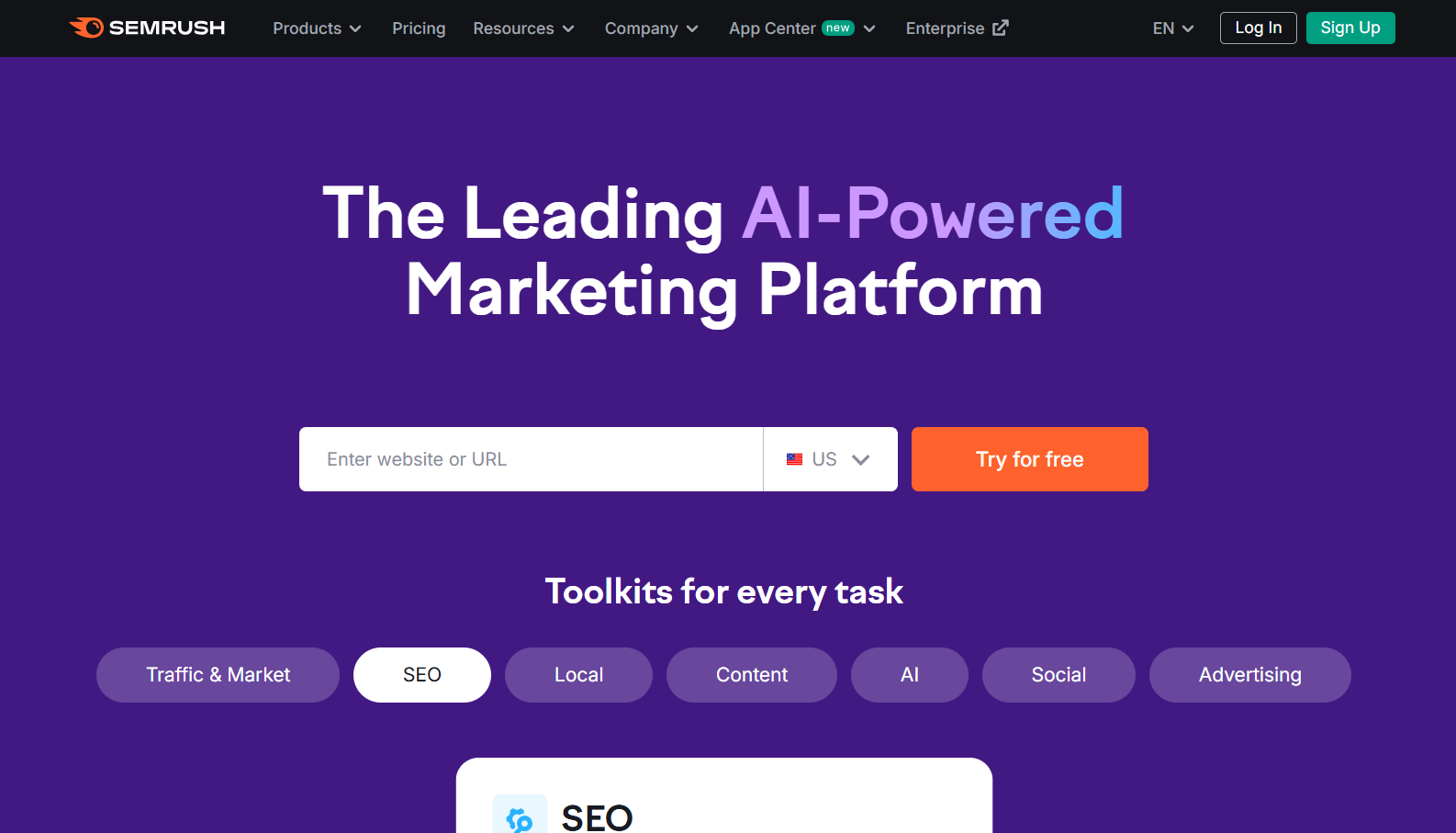
SEOClarity
SEOClarity goes beyond rank tracking by showing how AI-powered search results influence your visibility.
It can segment keywords impacted by AI features, identify cannibalization risks, and highlight where SERP layouts have shifted toward zero-click formats.
Automated alerts, content gap analysis, and site audits help ensure you adapt quickly as AI reshapes organic search.
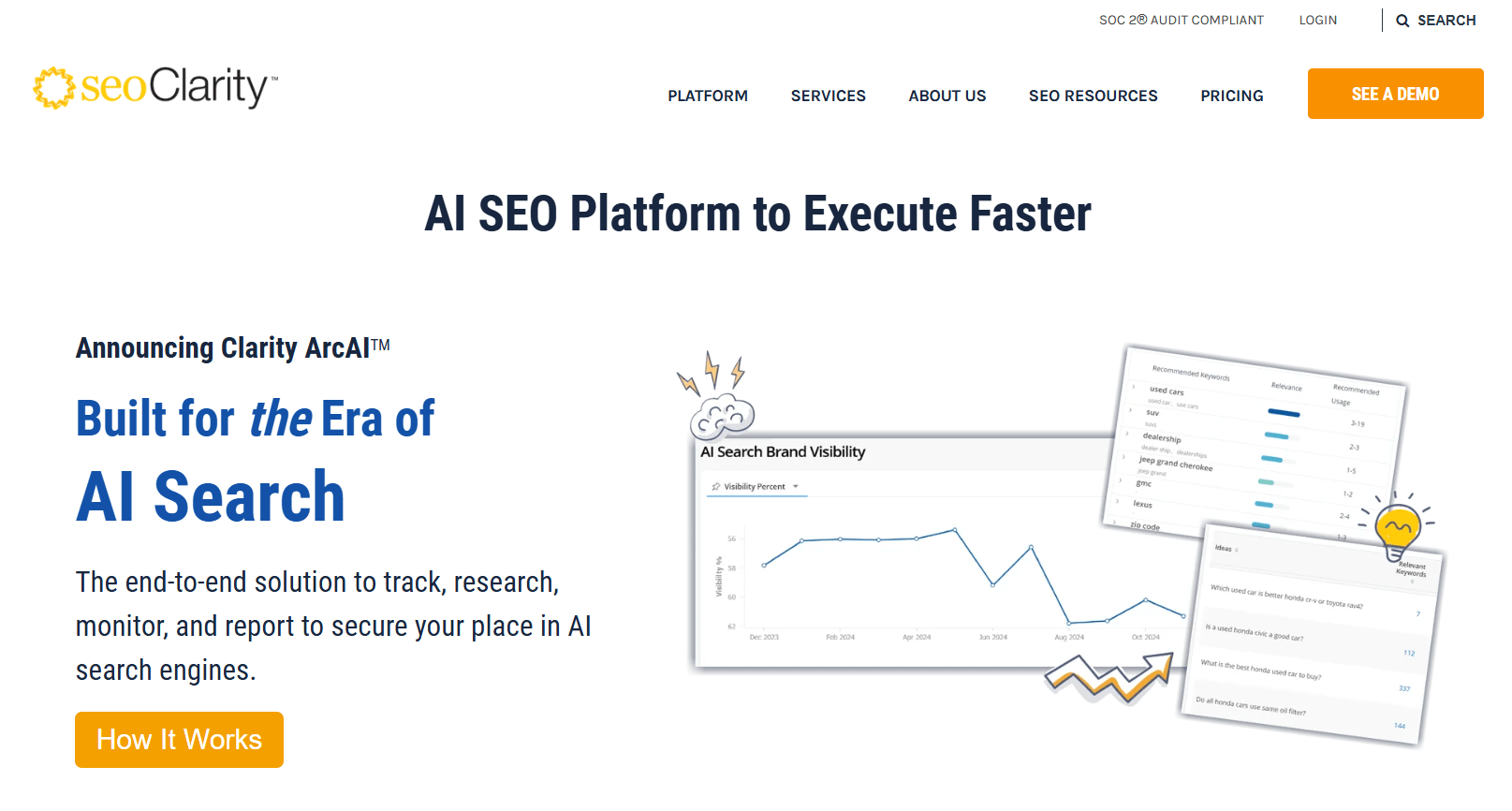
SISTRIX
SISTRIX detects emerging AI result types, such as conversational answer boxes or multi-source snippets, and quantifies their effect on your rankings.
With historical SERP data, competitor comparisons, and visibility index tracking, you can pinpoint when an AI-driven change starts influencing your traffic and act before you lose ground.
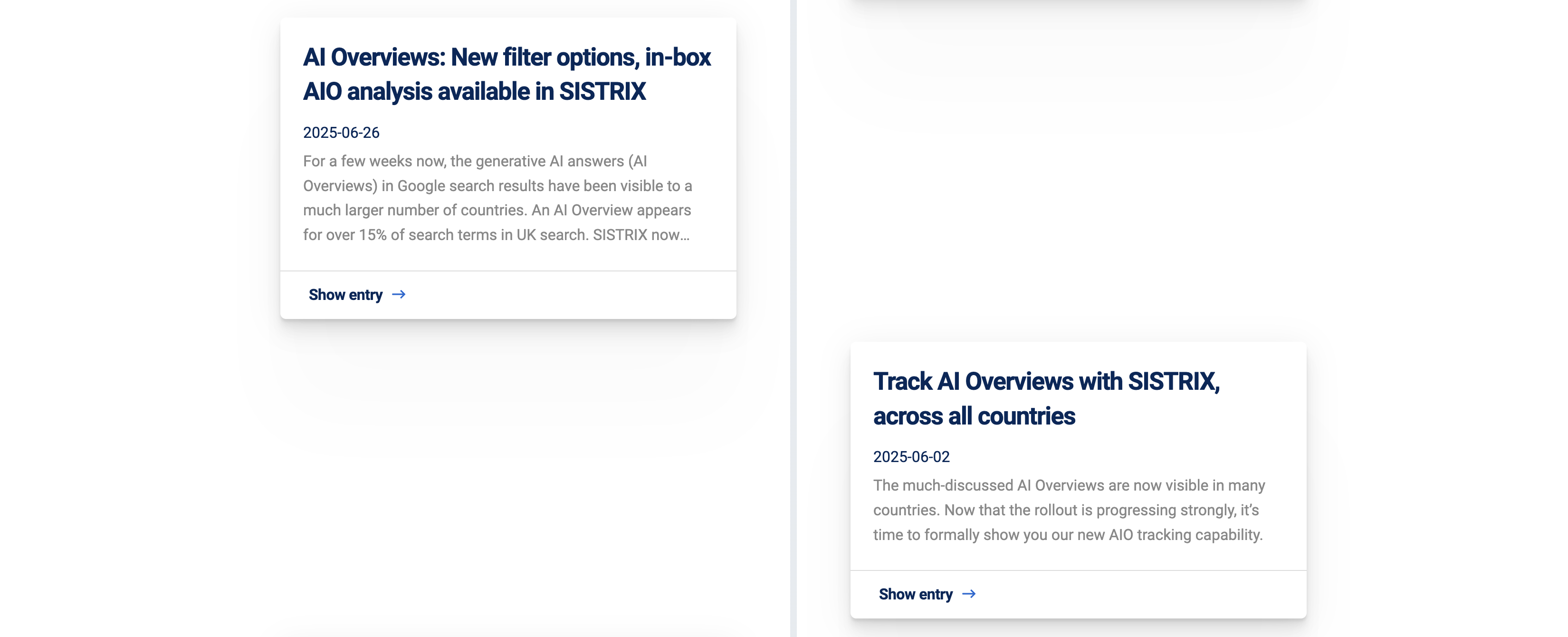
Writesonic GEO Suite
Writesonic GEO Suite blends AI content creation with geographic performance analytics. It lets you generate location-tailored copy, translate and localize assets for multiple markets, and track engagement by region. Built-in integrations with publishing platforms and keyword research tools make it easier to expand AI visibility in specific territories.
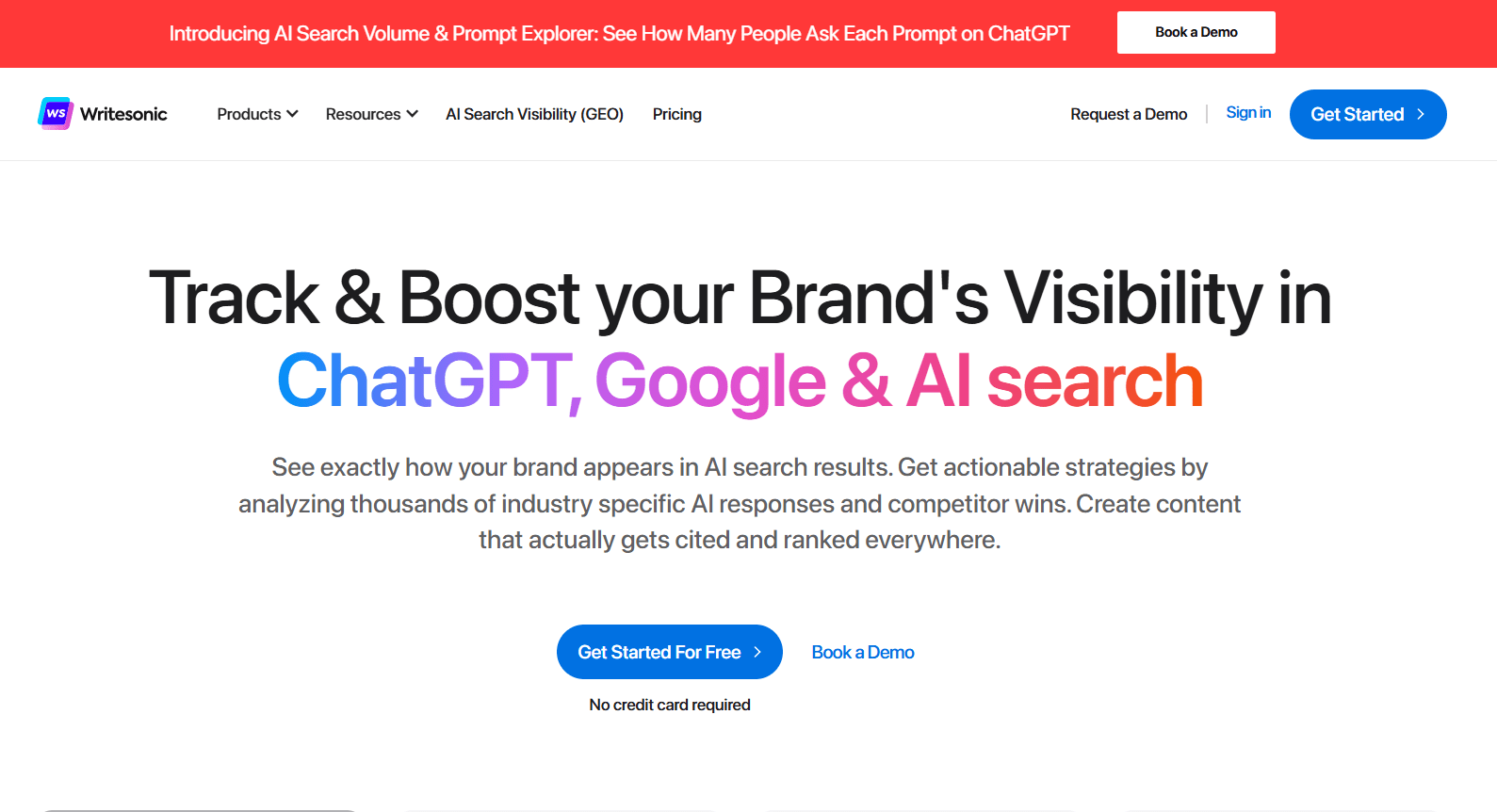
Google Search Console
Google Search Console may not be AI-specific, but it remains essential for validating the impact of your optimization work.
It shows which queries trigger impressions, how your click-through rate changes over time, and where indexing issues may be holding you back. This data can be used alongside AI tracking to confirm that your traditional SEO health supports AI search performance.
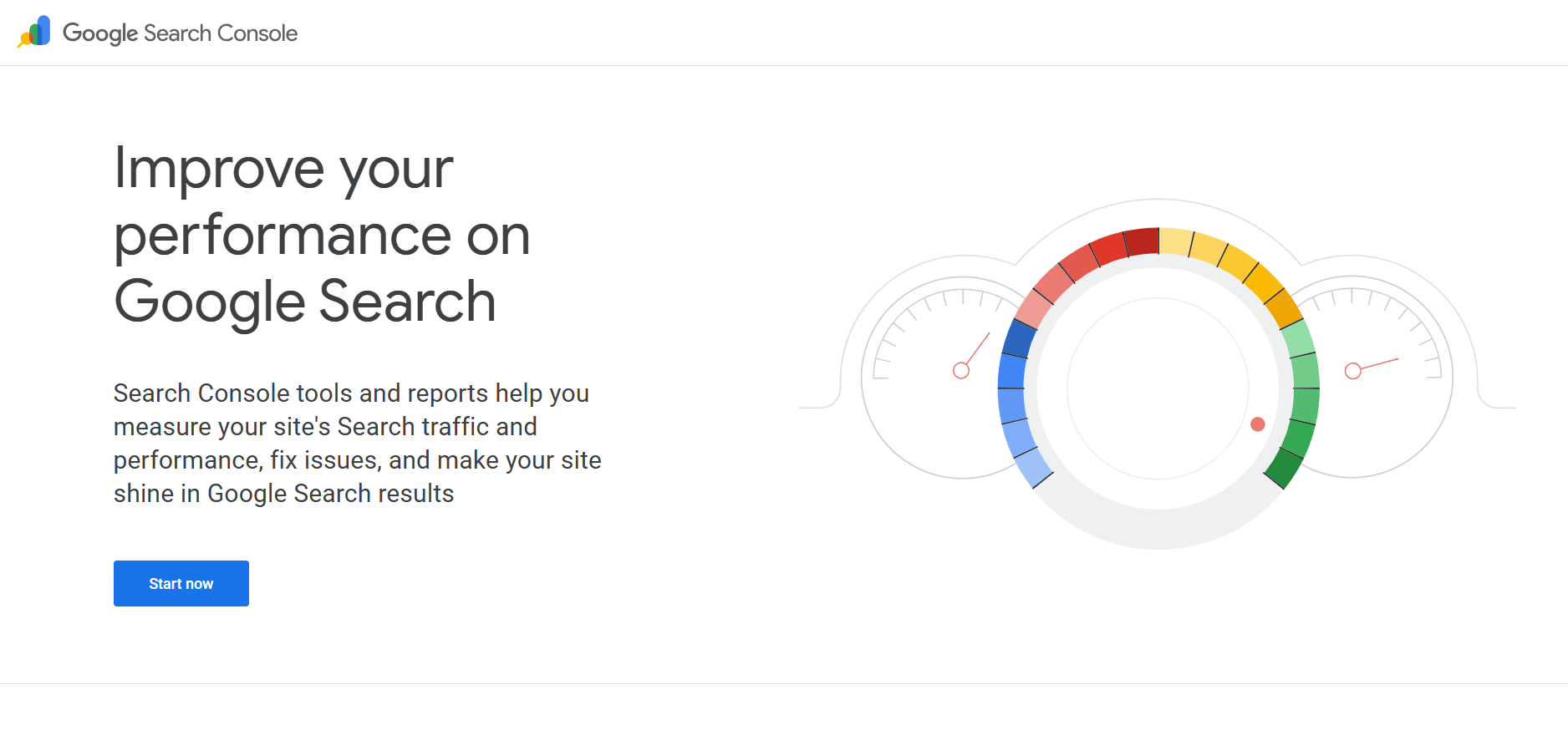
Otterly.AI
Otterly.AI sends real-time alerts when your brand is mentioned or linked in AI-generated answers.
It logs the exact phrasing, the AI model used, and the query context, allowing you to refine your targeting. Historical tracking helps spot trends in which topics or questions are most likely to feature your content.
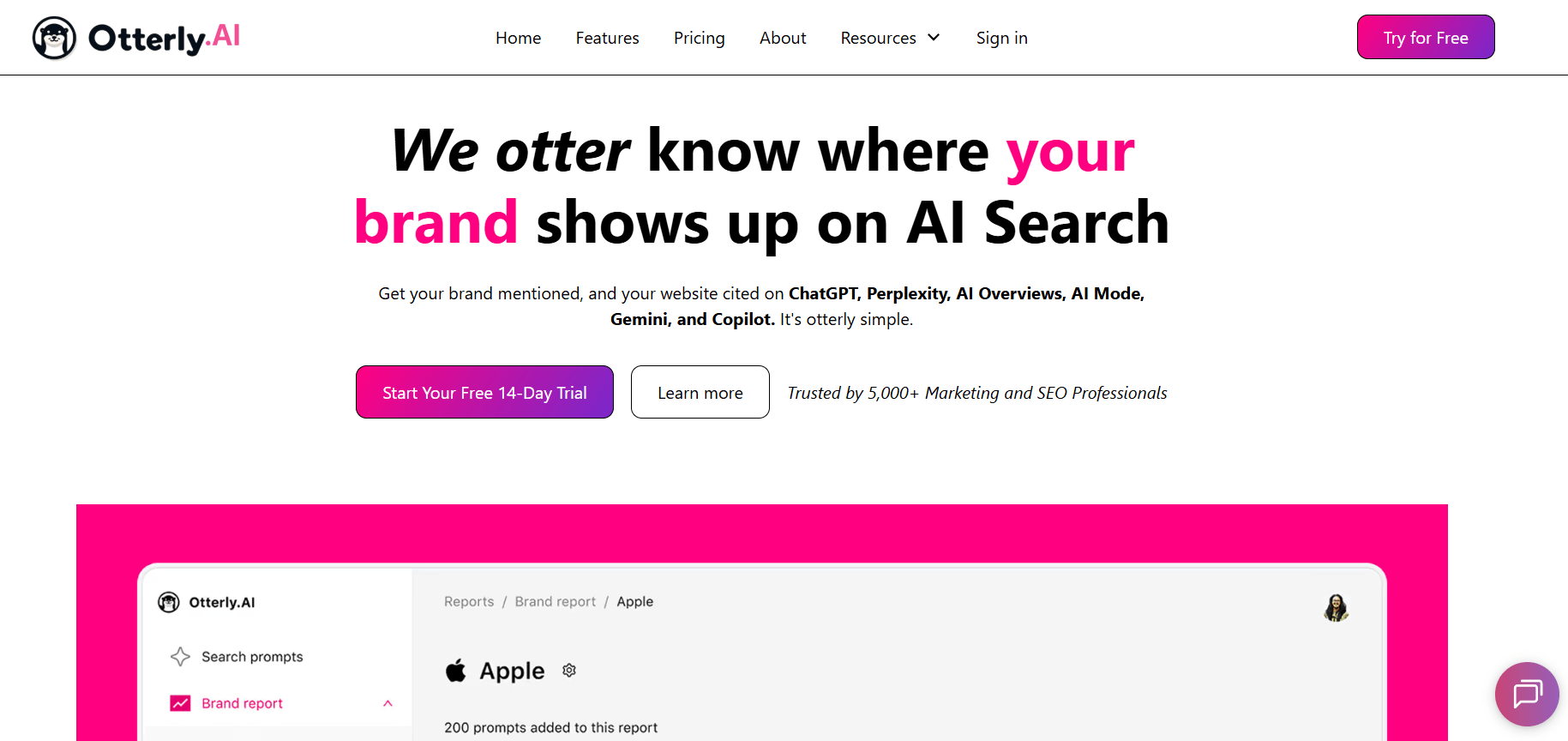
Surfer SEO
Surfer SEO reverse-engineers the top results for your target keywords, then provides actionable recommendations for content length, keyword placement, and semantic clusters.
AI integration lets you quickly generate outlines and drafts that align with both human readability and AI preference for structured, high-quality information.
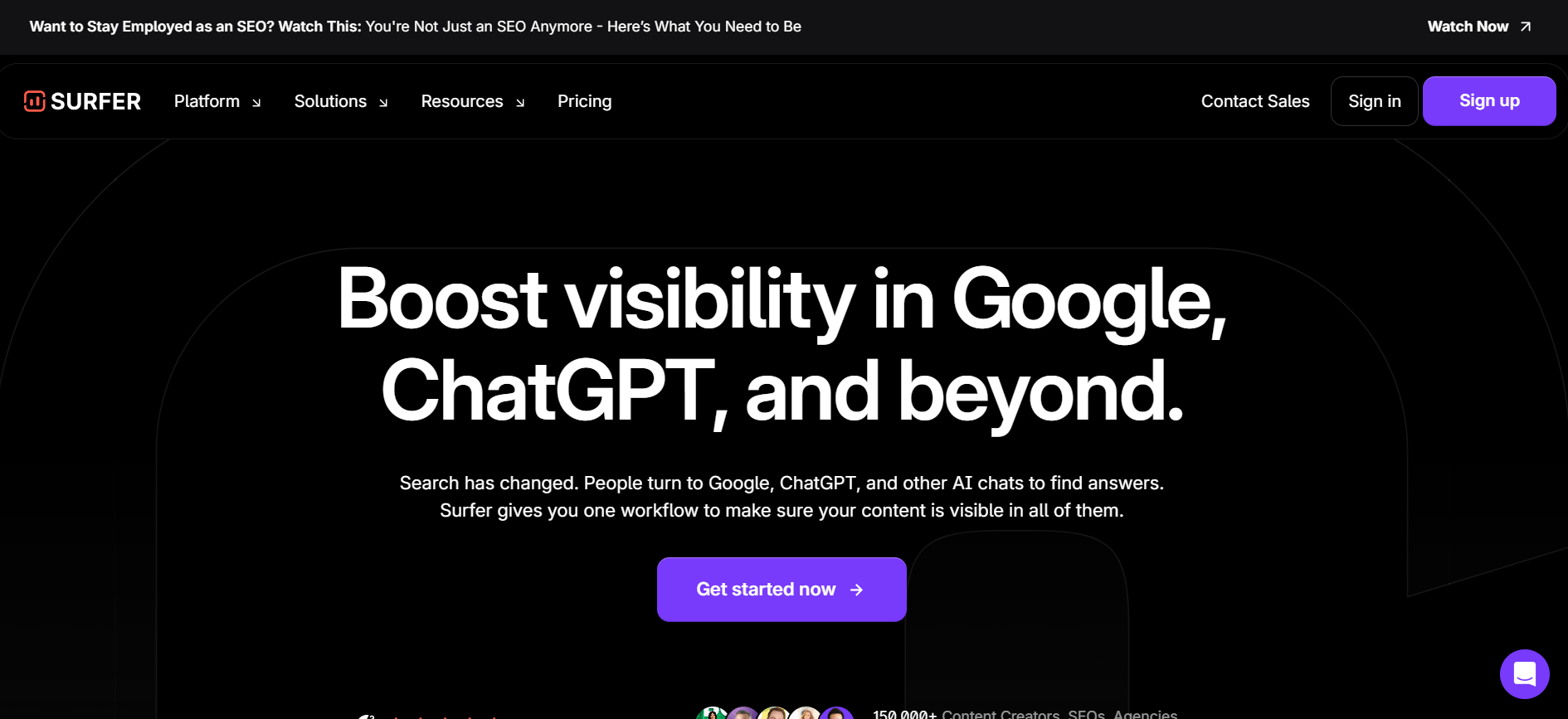
Clearscope
Clearscope grades your content based on comprehensiveness, relevance, and readability.
It suggests terms and topics to include so your content covers a subject thoroughly enough to satisfy both AI summarizers and human researchers. Its keyword difficulty and content gap features also reveal opportunities your competitors are missing.
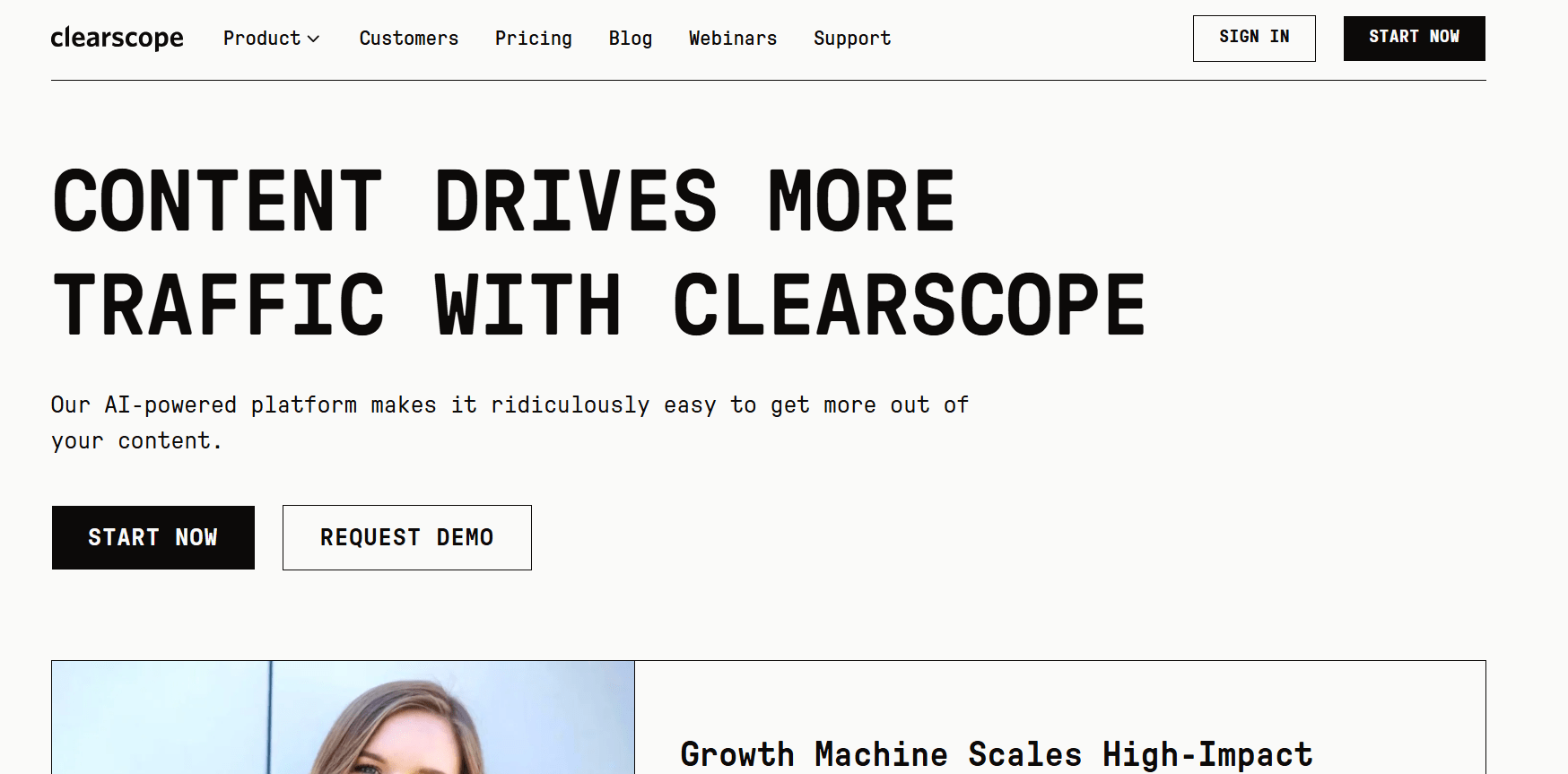
Real World Wins How Businesses Are Dominating AI Search
Measuring AI search presence against local competitors is vital for market positioning, especially for local businesses. The following case studies highlight key challenges and successes in AI search optimization.
These examples provide insights into effective strategies and practical applications of AI search metrics, demonstrating how optimization enhances visibility and drives search results.
Law Firms: Optimizing for AI Retrieval Metrics
Law firms often face difficulties appearing in AI-generated search summaries and zero-click features because their content is frequently unstructured and hard for AI systems to interpret.
To address this challenge, adopting structured data markup such as FAQPage, Attorney, or HowTo schemas is essential. Additionally, formatting content with clear headers, concise answers, and bullet points makes it more machine-readable and favored by AI search models.
A study by Good2BSocial, which analyzed over 70 law firms, revealed that AI-generated sources drove a remarkable 592.90 % average increase in website traffic between Q1 and Q3 of 2024. This evidence demonstrates that AI-optimized, structured legal content significantly boosts visibility and client acquisition opportunities.
E-commerce Businesses: Enhancing AI Search ROI
E-commerce brands often struggle to link AI-driven search interactions to conversion outcomes and to optimize user engagement with AI-powered tools.
By integrating AI-powered conversational agents and personalized search experiences, these brands can engage shoppers more effectively and track AI's impact on purchase behavior.
Statistics show that shoppers interacting with AI chat tools converted at 12.3%, nearly four times higher than the 3.1% conversion rate of non-interacting shoppers. Moreover, returning customers using AI chat spent 25% more on average.
Brands employing generative AI reported conversion rates ranging from 14% to 33%, highlighting AI's strong influence on sales growth.
Local Businesses: Adapting to AI Search Trends
Local businesses often miss out on customer engagement and foot traffic due to inadequate optimization for AI-driven local search and voice-powered discovery.
Optimizing Google Business Profiles with accurate, structured information and leveraging AI-driven strategies can significantly improve their digital presence and AI search visibility.
Businesses with AI-optimized Google Business listings experience up to 70 % more local traffic compared to standard listings.
Additionally, 82 % of local searchers visit the business within 24 hours, and voice-powered local discovery has grown by 136 % since 2023. These enhancements translate into increased engagement, foot traffic, and business growth.
Frequently Asked Questions
How can businesses track their brand's presence in AI-generated content?
Businesses can effectively track their brand's presence in AI-generated content using tools like Semrush AI Toolkit and Writesonic GEO Suite, which monitor citation frequency and brand sentiment while offering strategic insights. This enables informed decision-making to enhance brand visibility.
What is the significance of structured data in AI search optimization?
Structured data is crucial for AI search optimization as it enables search engines to accurately interpret and index page content, leading to improved visibility and ranking in search results. This enhances the overall search experience by facilitating better comprehension and presentation of your content.
How often should businesses update their content to maintain visibility in AI search results?
To maintain visibility in AI search results, businesses should regularly update their content, focusing on high-traffic pages through consistent audits to identify and refresh outdated material. This proactive approach significantly enhances search optimization efforts.
How can I create AI-friendly content?
To optimize for AI search, focus on understanding user intent so your content directly answers AI-driven queries. Keep your information clear, relevant, and valuable for both AI models and human readers. A conversational tone improves engagement and recognition by AI systems. Regular updates are also key, there are tools that can help you tailor your content for different locations and markets.
Why is structured data important for AI discoverability?
Structured data makes it easier for AI to find, interpret, and rank your content. For example, law firms using FAQPage or Attorney schema often appear more in AI summaries and zero-click results. Local businesses with accurate, updated profiles and schema markup on products, services, and reviews are more likely to be featured prominently in AI-powered search results.
How do I use AI search metrics for ongoing optimization?
Review AI search performance regularly to ensure your content matches evolving algorithms and user behaviors. Analytics can reveal patterns in engagement and intent alignment. Refreshing your content often and making targeted updates helps maintain rankings and increase conversions in AI-driven search results.
Conclusion
As AI search optimization evolves, understanding key AI search metrics is essential for success. Tracking citation frequency, user engagement, structured data use, and content freshness provides valuable insights into search performance and visibility.
Adapting to AI search trends and applying effective strategies helps businesses improve visibility, engagement, and overall search results.
The shift from traditional SEO to AI search visibility demands new measurement approaches.
Tools like Semrush AI Toolkit, SurferSEO, and Otterly.AI offer comprehensive tracking to keep businesses competitive. Real-world examples demonstrate practical applications of these strategies, highlighting effective AI search optimization.
Ready to Improve Your AI Search Performance?
Work with our team of experts to apply AI-driven metrics and search strategies that support real business outcomes.








